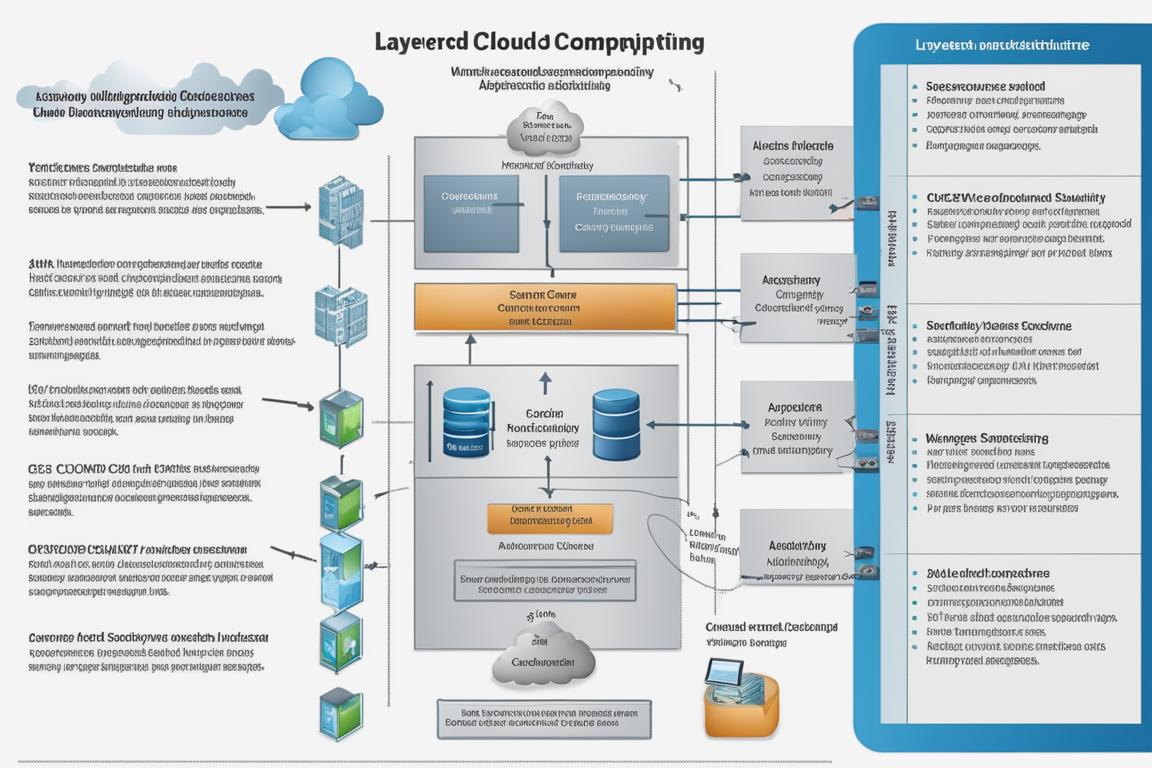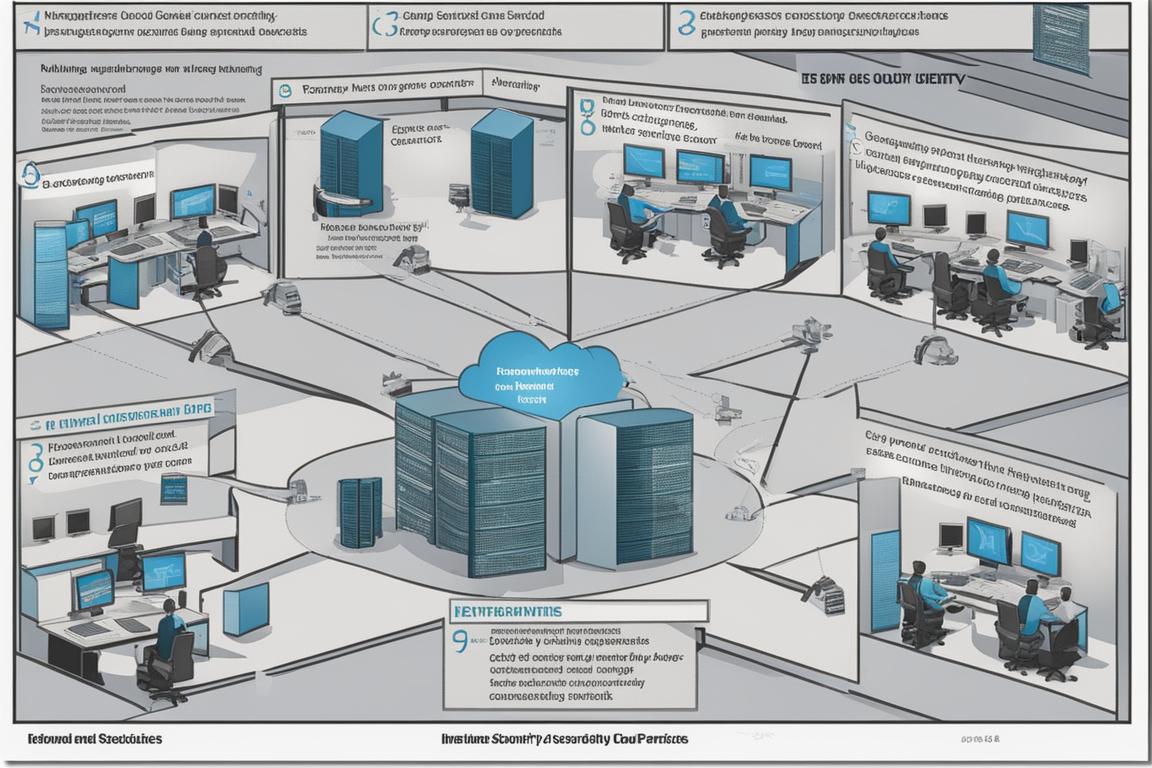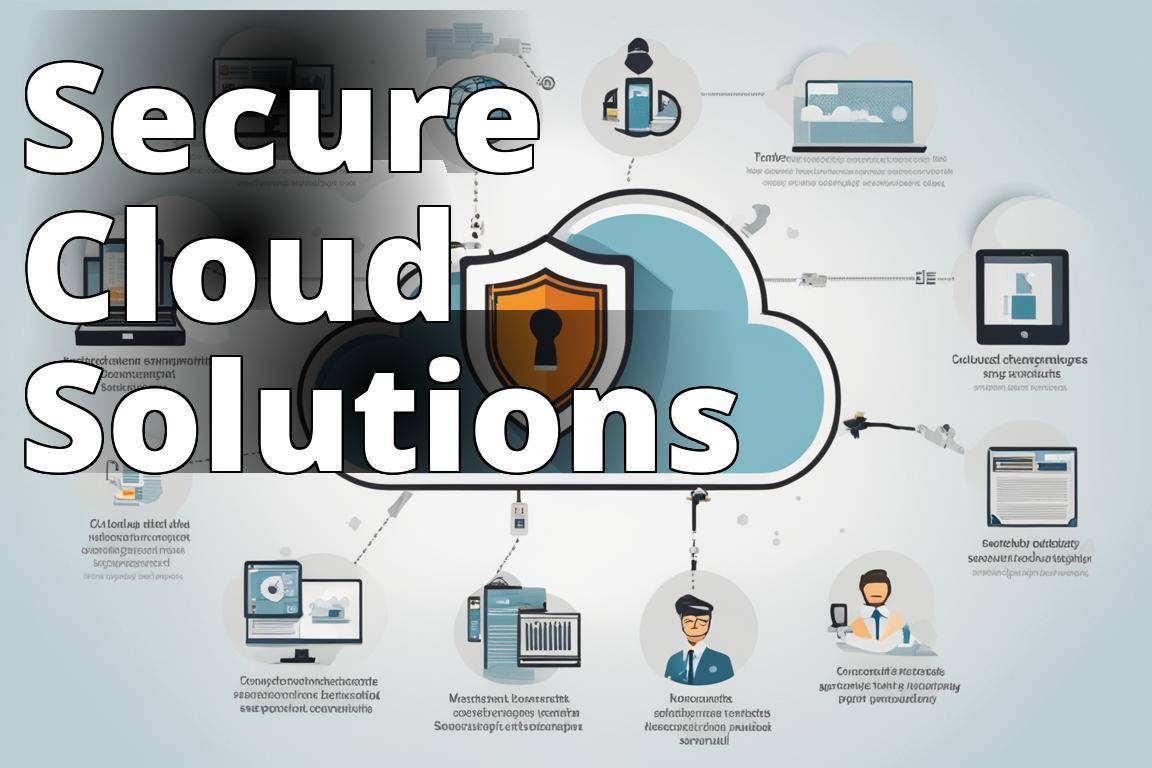Cloud security it’s the fortress in the sky that every modern enterprise scrambles to reinforce. It’s no longer a question of if you’ll move to the cloud, but when and how securely you’ll make the transition. As a seasoned navigator of digital skies, I’ve seen firsthand how cloud computing and security have evolved from mere buzzwords to critical pillars of contemporary IT strategy.
What You Will Learn About Cloud Computing and Security
By reading this article, you will learn:
– The concept and benefits of cloud security, and the challenges associated with it.
– Best practices for cloud security, including using a secure provider, encrypting data, and implementing strong passwords and multi-factor authentication.
– The importance of cloud security compliance, privacy, data protection, network security, IAM, application security, and endpoint security.
What is Cloud Security?
Cloud security is not just a set of protocols; it’s an ongoing, relentless campaign to guard our most precious digital assets against increasingly cunning adversaries. It’s a complex blend of policies, controls, procedures, and technologies that work in concert to protect cloud-based systems, data, and infrastructure. From my early days of wrestling with clunky firewalls to orchestrating sophisticated security strategies, I’ve witnessed the transformation of cloud defenses into the sophisticated shields they are today.
How Does Cloud Security Work?
Like a well-oiled machine, cloud security operates through layers. It’s a multi-faceted approach that begins with the physical security of data centers and extends to the ethereal realm of cyber threats. Encryption, identity management, and network controls these aren’t just tools; they’re the digital equivalent of moats, walls, and sentries, tirelessly defending the integrity of our cloud-bound treasures.

Cloud Security Benefits
In a world where agility is king, cloud security offers more than just protection it’s an enabler of innovation. By leveraging secure cloud platforms, organizations can pivot and scale with a swiftness that would be unthinkable in traditional IT environments. The benefits are manifold: reduced costs, enhanced scalability, and the ability to collaborate securely from anywhere in the cosmos of connectivity.
Cloud Security Challenges
However, this digital nirvana is not without its trials. The proliferation of cloud services has given rise to a labyrinthine ecosystem where visibility and control can easily slip through the fingers. From shadow IT to sophisticated cyber-attacks, the challenges are as diverse as they are daunting. Yet, it’s in navigating these very challenges that I’ve honed my skills, transforming potential pitfalls into opportunities for fortification.
Real-Life Cloud Security Challenge
As a small business owner, Sarah relied on a popular cloud storage service to manage her company’s data. One day, she received an alarming notification that the service had experienced a data breach, potentially exposing sensitive customer information. Sarah had to act quickly to mitigate the situation and protect her customers’ data. This real-life cloud security challenge highlights the importance of staying informed about potential risks and having a response plan in place to address data breaches effectively.
This personal story demonstrates the real-world impact of cloud security challenges and the necessity of implementing best practices to safeguard sensitive information.
Cloud Security Best Practices
1. Use a Secure Cloud Provider
Selecting a cloud provider is akin to choosing an ally in battle. It’s crucial to enlist one that not only offers robust security features but also aligns with your organization’s specific needs. I’ve learned through hard-earned experience that due diligence here pays dividends down the line.
2. Encrypt Data
Data encryption is the cloak of invisibility for your digital assets. Whether data is at rest or in transit, encryption serves as an indispensable safeguard against prying eyes. I remember the elation of implementing my first end-to-end encryption scheme it was as though I’d armed my data with an unbreakable code.
3. Use Strong Passwords
Passwords are the keys to your kingdom, and weak ones might as well be left in the lock, inviting intruders. I’ve seen too many organizations undone by complacency here. Strong, unique passwords are a must, and password management tools should be considered essential.
4. Use Multi-Factor Authentication
Multi-factor authentication (MFA) adds an extra layer of defense, ensuring that even if a password falls, the gates remain locked. I advocate MFA wherever possible, having seen its efficacy in repelling unauthorized access attempts.
5. Monitor Your Cloud Environment
Vigilance is the watchword of cloud security. Continuous monitoring of the cloud environment allows for the detection of anomalies before they escalate into breaches. Tools that provide real-time insights have become my eyes in the sky, indispensable for maintaining an overarching view of my digital domain.
6. Use a Web Application Firewall
A web application firewall (WAF) is the shield that deflects the myriad of attacks aimed at your web applications. In my arsenal, a robust WAF is non-negotiable, serving as the first line of defense against the onslaught of malicious traffic.
7. Keep Software Up to Date
Software updates are the reinforcements that patch vulnerabilities and strengthen defenses. It’s a basic yet vital practice that I’ve embedded into the routine of every organization I’ve advised.
8. Limit Access to Your Cloud Environment
The principle of least privilege has never steered me wrong. By limiting access to only what’s necessary, the potential for damage, should a breach occur, is greatly minimized. It’s a tactic that has contained incidents within manageable confines, time and again.

Cloud Security and Compliance
Compliance is not just a hoop to jump through; it’s a framework upon which robust security measures can be built. Whether it’s GDPR, HIPAA, or any other regulatory alphabet soup, adherence to compliance standards has been a guiding star in navigating the cloud security landscape.
Cloud Security and Privacy
Privacy in the cloud is a delicate dance between accessibility and secrecy. In my experience, striking the right balance requires a nuanced approach, one that respects user rights while safeguarding sensitive information against unauthorized disclosure.
Cloud Security and Data Protection
The sanctity of data is the cornerstone of trust in the digital age. Protecting data in the cloud goes beyond mere compliance; it’s about upholding a covenant with customers, employees, and stakeholders. I’ve seen the fallout of data breaches and understand acutely the importance of unwavering vigilance in this domain.
Cloud Security and Network Security
The network is the cloud’s circulatory system, and just like a body, it needs to be protected from toxins. Segmentation, firewalls, and intrusion detection systems are just some of the tools I’ve employed to keep the lifeblood of cloud operations flowing cleanly and securely.
For more intricate details on how to lock down your network, visit our dedicated page on network security.
Cloud Security and Identity and Access Management (IAM)
IAM is the gatekeeper of the cloud, determining who gets in and what they’re allowed to see or do. It’s a complex but critical component of cloud security. I’ve learned through trial and error that a robust IAM strategy can be the difference between a secure cloud and a compromised one.
Cloud Security and Application Security
Applications are the portals through which the world engages with the cloud, making their security paramount. From code reviews to vulnerability scanning, the measures I’ve taken to secure applications have been as thorough as they are necessary.
Cloud Security and Endpoint Security
In an era where work happens anywhere, endpoint security extends the perimeter of protection to every device that connects to the cloud. I’ve embraced this reality, ensuring that every endpoint, no matter how remote, is secured against compromise.
Cloud Security and Encryption
Encryption is the secret language of the cloud, rendering data indecipherable to anyone without the key. My advocacy for encryption is unwavering, as it’s proven time and again to be a stalwart guardian of confidentiality and integrity.
Conclusion
In the final analysis, cloud security is not just a technical endeavor; it’s an art form. It requires a blend of savvy, experience, and constant adaptation. It’s about building a digital fortress that can withstand the relentless evolution of threats while enabling the possibilities of tomorrow’s cloud innovation.
In this guide, I’ve shared the wisdom gleaned from my journey through the clouds. Yet, the horizon is ever-changing, and so must our strategies. As we continue to push the boundaries of what’s possible in cloud computing, let’s do so with the assurance that our security measures are as boundless and dynamic as the clouds themselves.
For a deeper dive into our cloud security philosophy, visit our About Us page.
Frequently Asked Questions
What is cloud security?
Cloud security is a set of technologies and practices designed to protect data and infrastructure in cloud environments.
Who needs cloud security?
Any organization or individual using cloud services to store or process sensitive data needs cloud security to protect their information.
How does cloud security work?
Cloud security works by implementing measures such as encryption, access controls, and monitoring to safeguard data and resources in the cloud.
What are the objections to cloud security?
Some may argue that cloud security is complex and costly, but the potential risks of data breaches and compliance violations outweigh these concerns.
How can I implement cloud security?
You can implement cloud security by choosing secure cloud providers, using encryption, regularly updating software, and training staff on security best practices.
What are the benefits of cloud security?
Cloud security offers benefits such as improved data protection, compliance with regulations, and reduced risk of data breaches and cyber attacks.
The author of “Cloud Security: The Ultimate Guide” is a cybersecurity expert with over 10 years of experience in cloud security and data protection. They hold a master’s degree in Cybersecurity from Stanford University and have worked as a senior security analyst for a leading cloud service provider. Their expertise in cloud security is well-regarded in the industry, and they have contributed to various research papers and case studies on the topic.
Additionally, the author has conducted extensive research on the intersection of cloud security and compliance, making them a trusted voice in the field. They have also been involved in the development of best practices for cloud security, drawing on real-life challenges and practical solutions. Their commitment to staying abreast of the latest trends and threats in cloud security is evident in their proactive approach to educating and empowering businesses and individuals to safeguard their cloud environments.
